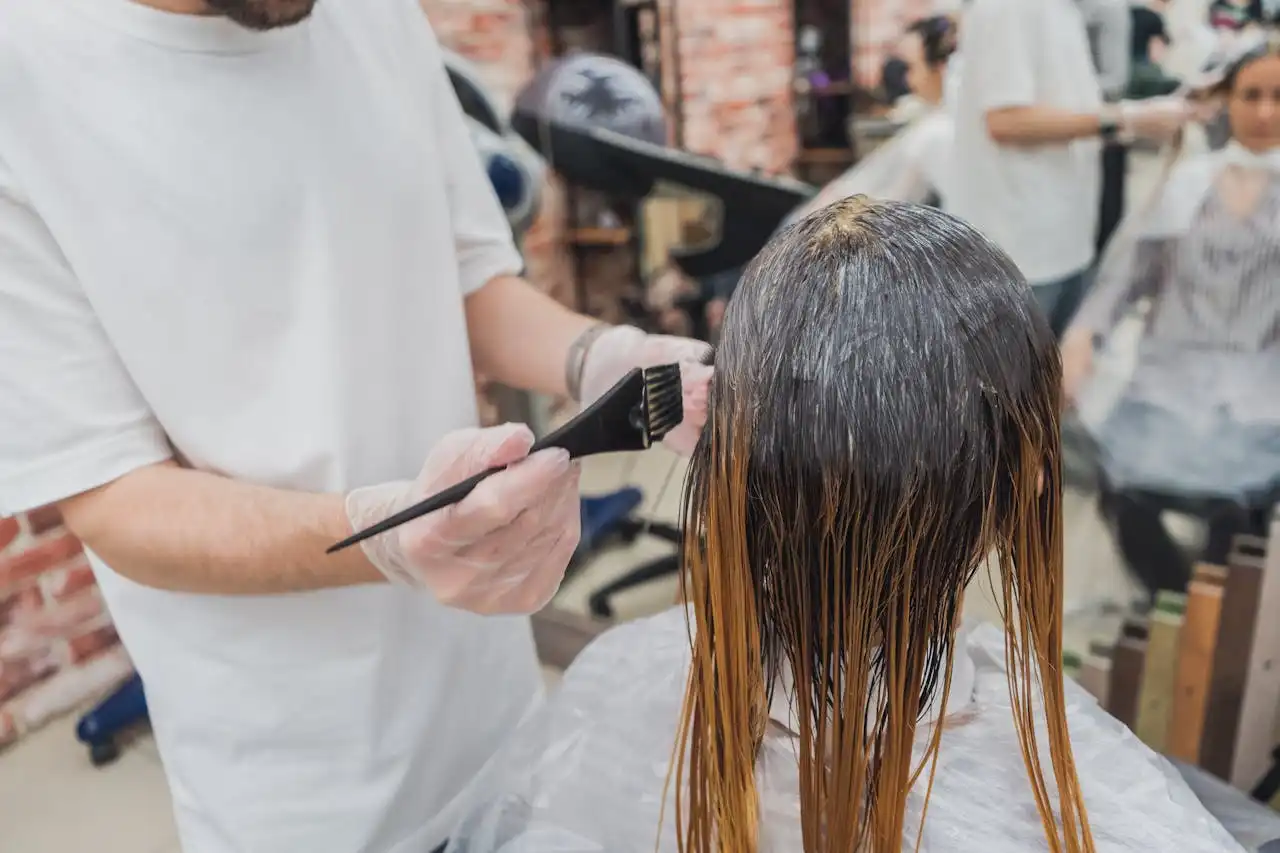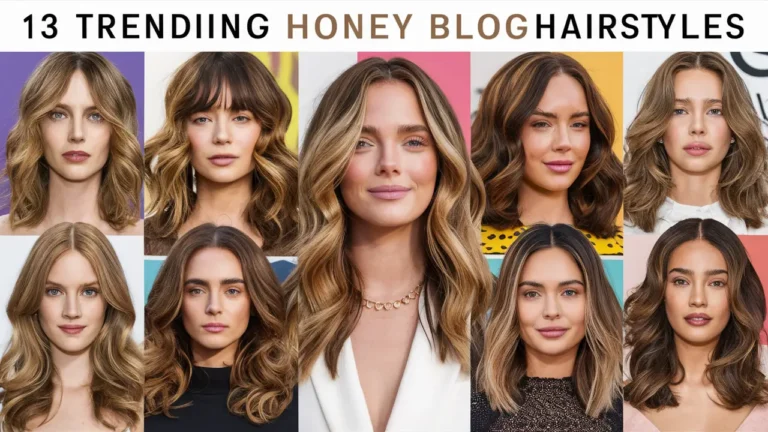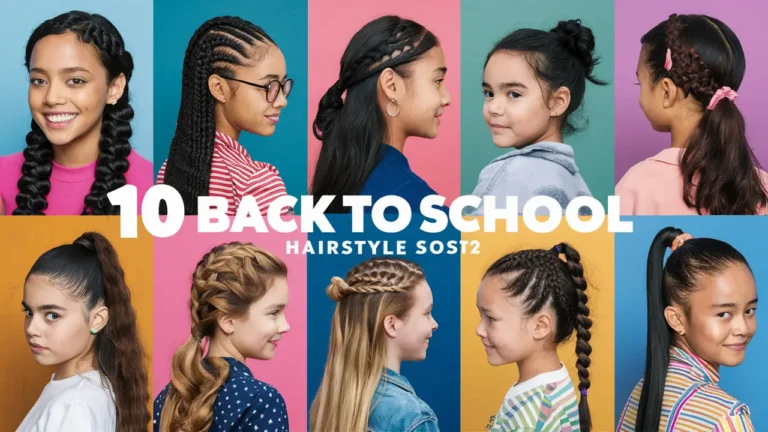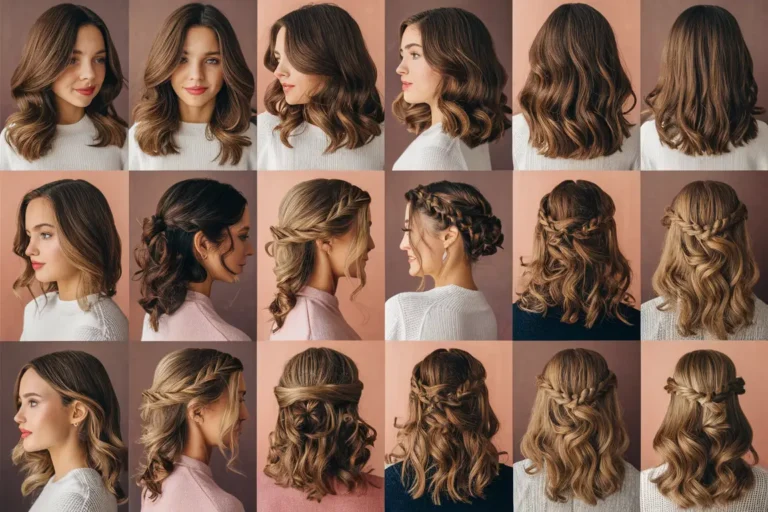How to Repair Hair Damage After Coloring
Coloring your hair can leave you with gorgeous new shades but also unwanted damage. Don’t panic if your locks feel dry, brittle, or lifeless after your latest color session.
You can restore your hair’s health and vitality with the right repair strategies and consistent care routine.
Understanding What Coloring Does to Your Hair

The Science Behind Color Damage
When you color your hair, the chemical process opens your hair cuticles to deposit or remove pigment.
This process inevitably weakens your hair’s natural structure, leaving it vulnerable to breakage and moisture loss.
The ammonia in permanent dyes swells your hair shaft, while hydrogen peroxide breaks down your natural melanin.
These chemicals work together to achieve your desired color but also strip away natural oils and proteins that keep your hair healthy.
Bleaching causes the most severe damage because it removes all natural pigment from your hair shaft.
This process can leave your hair feeling like straw if you don’t take immediate action to repair the damage.
Your hair’s porosity increases significantly after coloring, meaning it loses moisture faster and struggles to retain hydration.
Understanding this process helps you choose the right repair treatments for your specific damage level.
Immediate Post-Coloring Care
Wait Before Washing
You might feel tempted to wash your hair immediately after coloring, but resist this urge for at least 48 hours.
Your hair cuticles remain open and vulnerable during this time, and washing too soon can cause your new color to fade prematurely.
Use dry shampoo if your roots feel oily during this waiting period. Focus the product only on your scalp area and avoid getting it on your freshly colored lengths, which are already fragile.
When you do wash your hair for the first time, use lukewarm water instead of hot.
Hot water further opens your hair cuticles and strips away both color and natural moisture your hair desperately needs.
Consider using a color-safe, sulfate-free shampoo designed specifically for chemically treated hair.
These gentler formulas clean your hair without causing additional damage or color fading.
Gentle Drying Techniques
Skip the vigorous towel rubbing that you might normally use to dry your hair. Instead, gently squeeze excess water from your hair and wrap it in a microfiber towel or cotton t-shirt.
These materials create less friction than regular terrycloth towels, reducing breakage and frizz on your already compromised hair.
Pat your hair dry rather than rubbing it to minimize mechanical damage. Air drying becomes your best friend after coloring.
Heat styling tools can cause additional damage to already weakened hair, so embrace your natural texture whenever possible.
If you must use a blow dryer, apply a heat protectant product first and use the lowest heat setting.
Keep the dryer moving constantly and maintain at least six inches distance from your hair.
Deep Conditioning Treatments

Weekly Intensive Masks
Your colored hair needs extra moisture and nutrients to recover from the chemical processing.
Invest in a high-quality deep conditioning mask specifically formulated for color-treated hair.
Apply these masks weekly, focusing on your mid-lengths and ends where damage typically appears most severe.
Leave the treatment on for the full recommended time, usually 10-20 minutes, to allow maximum penetration.
Look for masks containing ingredients like argan oil, keratin, shea butter, or coconut oil.
These ingredients help fill in the gaps in your damaged hair cuticles and restore smoothness and shine.
You can also create DIY masks using natural ingredients like avocado, honey, and olive oil.
These kitchen staples provide intense moisture and nutrients without harsh chemicals that could further damage your hair.
Leave-In Conditioning Treatments
Daily leave-in conditioners become essential for maintaining moisture between wash days.
Choose lightweight formulas that won’t weigh down your hair but provide ongoing protection and hydration.
Apply leave-in conditioner to damp hair, focusing on the ends and avoiding your roots.
This prevents your scalp from becoming greasy while ensuring your damaged lengths receive continuous moisture.
Look for leave-in products containing UV protection to prevent sun damage from fading your color and causing additional dryness.
Many color-safe leave-in conditioners include this beneficial feature. Choose the texture that works best for your hair type and damage level.
Spray-on leave-in conditioners work well for fine hair, while cream formulas provide more intensive moisture for thick or severely damaged hair.
Protein Treatments for Structural Repair
Understanding Protein Needs
Colored hair often lacks sufficient protein due to the chemical processing that breaks down your hair’s natural protein structure.
Signs that your hair needs protein include excessive elasticity, limpness, and difficulty holding styles.
Perform a simple elasticity test by gently stretching a wet strand of hair. Balance protein treatments with moisturizing treatments for optimal hair health.
If it stretches significantly before snapping back or breaks easily, your hair needs protein more than moisture.
However, be careful not to overdo protein treatments, as too much protein can make your hair brittle and prone to breakage.
Start with protein treatments once every two weeks and adjust frequency based on how your hair responds. Some hair types need weekly protein, while others require it only monthly.
DIY Protein Treatments
Egg masks provide excellent protein for damaged hair. Gelatin treatments offer another effective protein option.
Mix one whole egg with a tablespoon of olive oil and apply to clean, damp hair for 15-20 minutes before rinsing with cool water.
Dissolve one packet of unflavored gelatin in hot water, let it cool slightly, and apply to your hair for 10 minutes before shampooing out.
Greek yogurt contains both protein and moisture, making it ideal for balanced hair repair.
Mix plain Greek yogurt with honey and apply as a mask for 20 minutes before rinsing thoroughly.
Rice water treatments have gained popularity for their protein content and strengthening properties.
Soak rice in water for 30 minutes, strain the liquid, and use it as a final rinse after shampooing.
Professional Treatment Options
Salon Repair Services
Consider visiting a professional colorist for specialized repair treatments that aren’t available for home use.
Many salons offer intensive protein reconstructions and bond-building treatments.
Polyplex treatments have become popular for their ability to rebuild broken hair bonds at the molecular level.
These treatments can significantly improve hair strength and appearance after just one session.
Brazilian keratin treatments smooth damaged cuticles and add protective coating to your hair shaft.
While these treatments require a significant time investment, they can dramatically improve manageability and appearance.
Ask your stylist about their recommended treatment schedule based on your specific damage level. Some treatments work better when done in a series over several weeks.
When to Seek Professional Help
If your hair breaks off in large chunks or feels extremely elastic and gummy when wet, seek professional help immediately.
These signs indicate severe damage that requires expert intervention. Don’t attempt to fix severe damage with box dyes or harsh treatments at home.
Professional colorists can assess your hair’s condition and recommend the most appropriate treatments for your specific situation.
They may suggest cutting off severely damaged ends or gradually repairing your hair over several months.
Professional guidance prevents further damage and helps you achieve the healthiest possible outcome.
Consider visiting a trichology’s if your hair damage seems extreme or isn’t improving with standard treatments.
These hair and scalp specialists can identify underlying issues affecting your hair’s health.
Heat Protection and Styling Adjustments
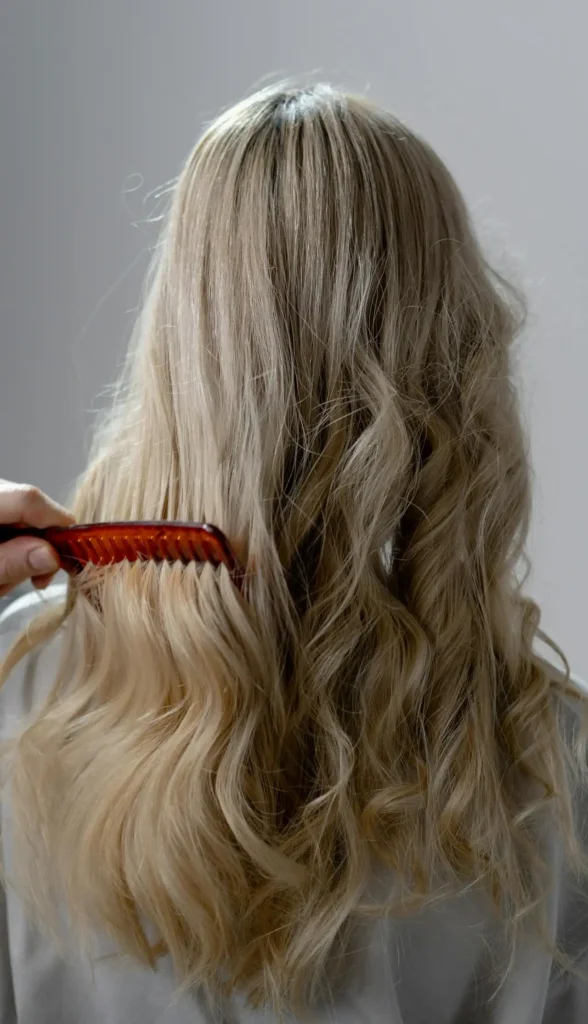
Minimizing Heat Damage
Reduce your use of hot styling tools as much as possible while your hair recovers from coloring damage. Embrace air-drying and heat-free styling methods whenever you can.
When you must use heat styling tools, always apply a heat protectant product first. Lower the temperature settings on your styling tools.
These products create a barrier between your hair and the high temperatures that can cause additional damage.
Most hair types don’t need temperatures above 300°F, and damaged hair should be styled at even lower temperatures to prevent further harm.
Invest in high-quality styling tools with adjustable temperature controls and even heat distribution.
Cheap tools often have hot spots that can burn and further damage your already compromised hair.
Protective Styling Methods
Learn heat-free styling techniques that can give you beautiful results without additional damage. Braiding damp hair creates gorgeous waves without any heat styling required.
Use foam rollers or flexi-rods on damp hair for bouncy curls that last for days. These methods actually help protect your hair while creating the styles you want.
Silk or satin pillowcases reduce friction while you sleep, preventing breakage and maintaining your styles longer. This simple change can significantly impact your hair’s health over time.
Protective hairstyles like low buns, braids, and twists keep your ends tucked away and protected from environmental damage and manipulation throughout the day.
Product Selection for Damaged Hair
Choosing the Right Shampoo
Switch to a sulfate-free shampoo specifically designed for color-treated hair. These ingredients clean effectively without causing additional damage or dryness.
Sulfates are harsh detergents that can strip both color and natural oils from your already compromised hair.
Look for shampoos containing gentle cleansing agents like coco-glucoside or deacyl glucoside.
Consider washing your hair less frequently to prevent over-cleansing. Use clarifying shampoo only once monthly to remove product buildup.
Many people find that washing every other day or even twice weekly helps their colored hair retain moisture and color.
Choose a gentle clarifying formula designed for color-treated hair rather than regular clarifying shampoos that might be too harsh.
Conditioner and Treatment Selection
Always use conditioner after every shampoo session, focusing on your mid-lengths and ends.
Choose rich, creamy formulas that provide intensive moisture without weighing down your hair.
Look for conditioners containing ingredients like ceramides, amino acids, and natural oils. These components help repair your hair’s structure and restore its natural protective barrier.
Consider using a deeper conditioning treatment instead of regular conditioner once or twice weekly.
These intensive treatments provide more concentrated repair benefits for severely damaged hair.
Rinse conditioners and treatments with cool water to help seal your hair cuticles and lock in moisture. This simple step can significantly improve your hair’s appearance and feel.
Nutrition and Lifestyle Factors
Supporting Hair Health from Within
Your hair’s recovery depends partly on proper nutrition that supports healthy hair growth.
Focus on consuming adequate protein, vitamins, and minerals that contribute to hair strength.
Include foods rich in biotin, vitamin E, omega-3 fatty acids, and iron in your diet. These nutrients support hair follicle health and can improve the quality of new hair growth.
Stay well-hydrated by drinking plenty of water throughout the day. Dehydration affects your hair’s moisture levels and can slow the recovery process.
Consider taking hair-specific supplements if your diet lacks essential nutrients. However, consult with a healthcare provider before starting any new supplement regimen.
Lifestyle Adjustments
Protect your hair from environmental damage by wearing hats or scarves in harsh weather conditions. Sun, wind, and cold temperatures can all worsen existing damage.
Reduce stress through exercise, meditation, or other relaxation techniques. High stress levels can negatively impact hair health and slow the recovery process.
Get adequate sleep to support your body’s natural repair processes. Poor sleep can affect hormone levels that influence hair growth and health.
Avoid tight hairstyles that create tension on your hair shaft and scalp. This mechanical stress can cause additional breakage on already weakened hair.
Long-Term Maintenance Strategies
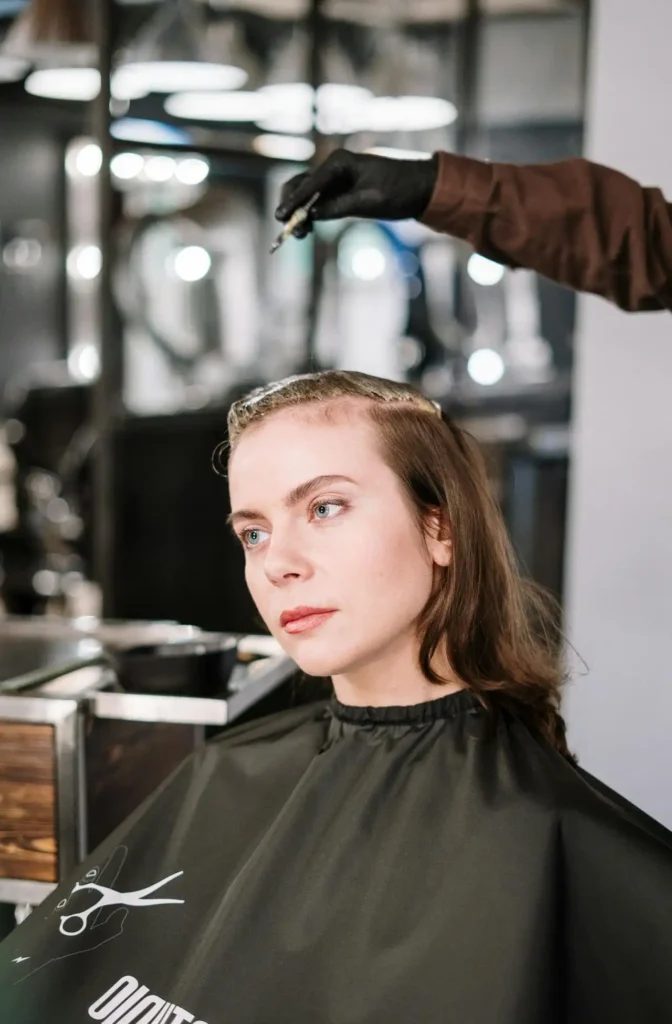
Preventing Future Damage
Space out your coloring appointments to give your hair time to recover between chemical processes.
Most professionals recommend waiting at least 6-8 weeks between color services.
Use color-depositing shampoos and conditioners to maintain your color between salon visits.
These products help extend your color while being gentler than repeated chemical processing.
Consider less damaging coloring techniques like highlights or lowlights instead of all-over color.
These methods affect smaller sections of hair and typically cause less overall damage.
Discuss your hair health goals with your colorist to develop a long-term plan that balances your desired look with maintaining healthy hair.
Monitoring Hair Progress
Take photos of your hair progress to track improvements over time. Sometimes gradual changes are hard to notice day-to-day, but photos can show significant progress.
Keep a hair journal noting which products and treatments work best for your specific hair type and damage level. This information helps you refine your routine for optimal results.
Pay attention to how your hair feels and behaves as it recovers. Healthy hair should feel smooth, have good elasticity, and hold styles well without excessive breakage.
Adjust your routine as your hair improves. You may need intensive treatments initially but can reduce frequency as your hair’s health returns to normal.
Conclusion
Repairing colored hair damage takes patience and consistent care, but healthy, vibrant hair is absolutely achievable with the right approach and products.

